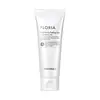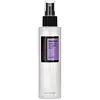What's inside
What's inside
 Key Ingredients
Key Ingredients

 Benefits
Benefits

 Concerns
Concerns

 Ingredients Side-by-side
Ingredients Side-by-side

Water
Skin ConditioningGlycerin
HumectantQuaternium-60
Propylene Glycol
HumectantCarbomer
Emulsion StabilisingDipropylene Glycol
HumectantParfum
MaskingPhenoxyethanol
PreservativeSaccharomyces/Nelumbo Nucifera Ferment Extract Filtrate
AntioxidantDisodium EDTA
Butylene Glycol
HumectantAscorbic Acid
AntioxidantPearl Powder
Caprylyl Glycol
Emollient1,2-Hexanediol
Skin ConditioningPentylene Glycol
Skin ConditioningNelumbo Nucifera Flower Extract
Skin ConditioningLactic Acid
BufferingSerine
MaskingSodium Lactate
BufferingSorbitol
HumectantUrea
BufferingPrunus Mume Fruit Extract
HumectantSodium Chloride
MaskingAllantoin
Skin ConditioningCitric Acid
BufferingWater, Glycerin, Quaternium-60, Propylene Glycol, Carbomer, Dipropylene Glycol, Parfum, Phenoxyethanol, Saccharomyces/Nelumbo Nucifera Ferment Extract Filtrate, Disodium EDTA, Butylene Glycol, Ascorbic Acid, Pearl Powder, Caprylyl Glycol, 1,2-Hexanediol, Pentylene Glycol, Nelumbo Nucifera Flower Extract, Lactic Acid, Serine, Sodium Lactate, Sorbitol, Urea, Prunus Mume Fruit Extract, Sodium Chloride, Allantoin, Citric Acid
 Reviews
Reviews

Ingredients Explained
These ingredients are found in both products.
Ingredients higher up in an ingredient list are typically present in a larger amount.
1,2-Hexanediol is a synthetic liquid and another multi-functional powerhouse.
It is a:
- Humectant, drawing moisture into the skin
- Emollient, helping to soften skin
- Solvent, dispersing and stabilizing formulas
- Preservative booster, enhancing the antimicrobial activity of other preservatives
Allantoin is a soothing ingredient known for its protective and moisturizingg properties. Because of this, it is often added to products with strong active ingredients.
Studies show higher concentrations of this ingredient can promote wound healing.
Though it can be derived from the comfrey plant, allantoin is produced synthetically for cosmetic products to ensure purity.
Learn more about AllantoinButylene Glycol (or BG) is used within cosmetic products for a few different reasons:
Overall, Butylene Glycol is a safe and well-rounded ingredient that works well with other ingredients.
Though this ingredient works well with most skin types, some people with sensitive skin may experience a reaction such as allergic rashes, closed comedones, or itchiness.
Learn more about Butylene GlycolSodium Lactate is the sodium salt of lactic acid, an AHA. It is a humectant and sometimes used to adjust the pH of a product.
This ingredient is part of our skin's NMF, or natural moisturizing factor. Our NMF is essential for the hydration of our top skin layers and plasticity of skin. NMF also influences our skin's natural acid mantle and pH, which protects our skin from harmful bacteria.
High percentages of Sodium Lactate can have an exfoliating effect.
Fun fact: Sodium Lactate is produced from fermented sugar.
Learn more about Sodium LactateWater. It's the most common cosmetic ingredient of all. You'll usually see it at the top of ingredient lists, meaning that it makes up the largest part of the product.
So why is it so popular? Water most often acts as a solvent - this means that it helps dissolve other ingredients into the formulation.
You'll also recognize water as that liquid we all need to stay alive. If you see this, drink a glass of water. Stay hydrated!
Learn more about Water